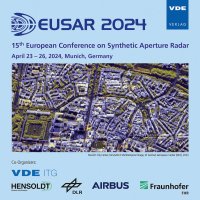The new SAR instrument for Thales Alenia Space HE-R1000 satellites
Conference: EUSAR 2024 - 15th European Conference on Synthetic Aperture Radar
04/23/2024 - 04/26/2024 at Munich, Germany
Proceedings: EUSAR 2024
Pages: 5Language: englishTyp: PDF
Authors:
Torre, Andrea; Ciarla, Francesco; Orlando, Giuseppe; Colaneri, Francesca; Sirocci, Gianfranco
Abstract:
HE-R1000 is one of the SAR product lines developed by Thales Alenia Space (TAS) with self-funded R&D for the commercial market. All the versions of this product Line are designed to offer the following key features: high revisit time (i.e. multiple data take opportunities per day over the same target), due to the inclined orbit optimized for each specific Customer/area of interest. High operational capability in terms of number of images that can be acquired and down-loaded per orbit, each orbit. Agile operation, i.e. high manoeuvre capability for image acquisition and for repointing to acquire successive images in a defined, even small, region of interest. Very high resolution granted by the satellite agility and large signal instantaneous bandwidth. SAR payload sensitivity, i.e. Noise Equivalent Σ Zero, provided by the antenna area and transmitted power. The SAR instrument is based on two subsystems, namely: the SAR Electronics Subsystem (SES), and the SAR antenna Subsystem (SAS). The SES being a fully redundant subsystem based on equipment and an architecture with a long successful flight heritage. The SAS is a centre fed dual reflector (LURA - Large Unfurlable Reflector Antenna) fed by a planar active phased array (FAA – Feed Array Assembly). The SAS is a new design based on many flight-proven elements; it completed the space qualification in 2022.


